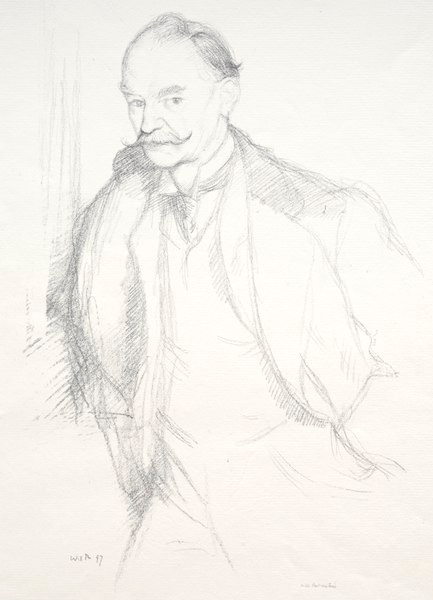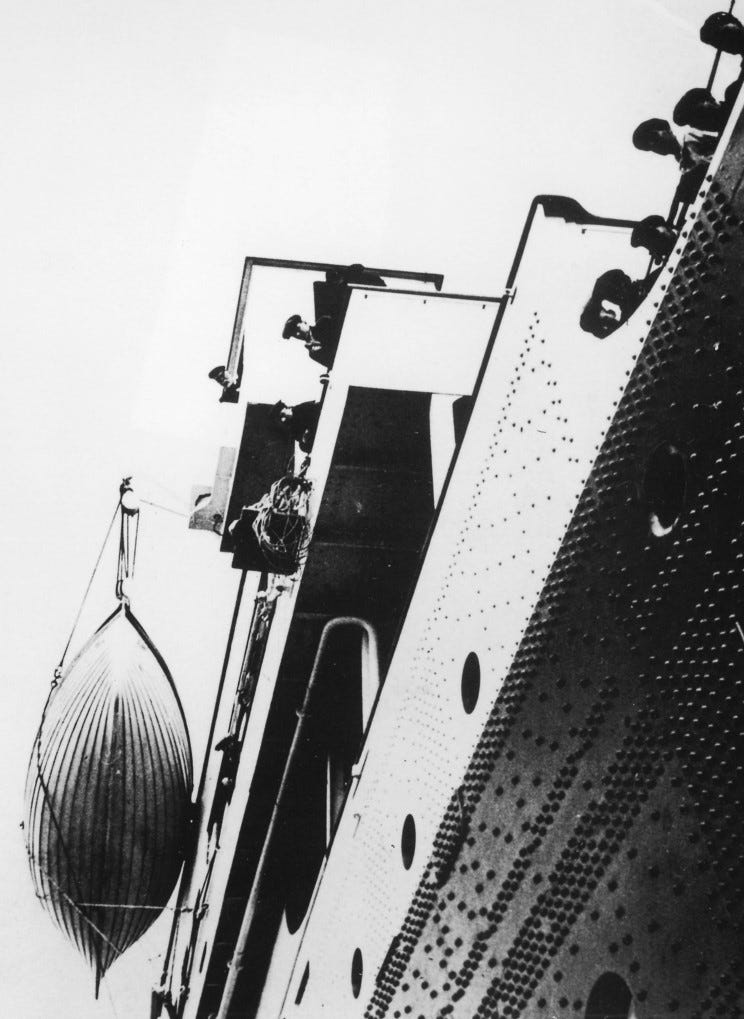Today’s Poem: The Convergence of the Twain
For Thomas Hardy’s birthday, tercets about the Titanic

We’ve noted before in this space that even among the not-inconsiderable demographic of novelist-poets, or poet-novelists, of the last hundred years or so, Thomas Hardy (1840–1928) is unusual. Although he was writing poems by the age of sixteen, his serious emergence as a poet, with the publication of Wessex Poems in 1898, occurred as a tectonic shift from a two-and-a-half-decade career as a novelist. His last novel, Jude the Obscure, appeared in 1895, and from that time forward it was as if he had been reborn into a wholly separate literary form, a whole new and longer career ending only on his deathbed, with the composition of one last poem.
No artist owes the world an explanation for the failure of one form to satisfy any longer, or for the persuasive call of a different terrain that may prove larger and more imaginatively fertile. For Hardy, at any rate, poetry seems to have offered that larger terrain. This sounds paradoxical, maybe, given the necessary compressions of the rhymed and metered forms in which he worked. But compression can often offer its own kind of freedom, and so it seems to have done for Hardy.
What exactly did poetry make possible, that couldn’t be accomplished as satisfyingly in prose? One way to answer this question is to consider what might happen when the demands of narrative fiction evaporate. An event in fiction may contain layers of resonance, emotional and symbolic, radiating in all directions — but it’s a single moment that has to give way to the next moment, and the whole apparatus has to move forward, one way or another, with however many stops and diversions, toward some conclusion. A poem, by contrast, allows both poet and reader to stop in one place; it allows a relatively small field of concern to expand and accrue meaning without having to move in time.
This is a simplistic way of putting things, of course, and incomplete as an explanation. Better to shift our attention to Today’s Poem by Hardy, whose June 2 birthday we mark. “The Convergence of the Twain” was written and published in 1912, the year of the sinking of the Titanic, the event the poem takes as its subject. More accurately, this series of eleven ship-shaped rhyming tercets — two trimeter lines followed by a line of hexameter — dwells not on the narrative of the disaster, as a chain of events, but on the Titanic’s having sunk. The poem’s structure, in numbered sections rather than connected stanzas, suggests that each stands alone. But in fact, sections VI and VII and sections X and XI encompass single sentences, knitting two sections together even as those sections develop the idea of a terrible predestination.

Mostly, though, each discrete section operates as a sharply distilled essay on the disaster, juxtaposing the “vainglory” of the Titanic’s “opulent” building and launching with the ship’s hiddenness at the bottom of the sea, where the only lasting reminders of the sky are the “moon-eyed fishes.” There’s pathos in the ship’s loss, but more than that, a grim sense that a cruel and unfeeling cosmic justice has accomplished her destruction, that the only possible “consummation” of her maiden voyage is her “convergence” with the fatal iceberg. At the poem’s opening, this narrative has already arced and concluded with terrible inevitability, leaving the imagination free to crawl, after the manner of the “sea-worms,” though perhaps not with their utter indifference, at its boundless leisure over the wreckage.
The Convergence of the Twain
by Thomas Hardy
(Lines on the loss of the “Titanic”)
I
In a solitude of the sea
Deep from human vanity,
And the Pride of Life that planned her, stilly couches she.
II
Steel chambers, late the pyres
Of her salamandrine fires,
Cold currents thrid, and turn to rhythmic tidal lyres.
III
Over the mirrors meant
To glass the opulent
The sea-worm crawls — grotesque, slimed, dumb, indifferent.
IV
Jewels in joy designed
To ravish the sensuous mind
Lie lightless, all their sparkles bleared and black and blind.
V
Dim moon-eyed fishes near
Gaze at the gilded gear
And query: “What does this vaingloriousness down here?” . . .
VI
Well: while was fashioning
This creature of cleaving wing,
The Immanent Will that stirs and urges everything
VII
Prepared a sinister mate
For her — so gaily great —
A Shape of Ice, for the time far and dissociate.
VIII
And as the smart ship grew
In stature, grace, and hue,
In shadowy silent distance grew the Iceberg too.
IX
Alien they seemed to be;
No mortal eye could see
The intimate welding of their later history,
X
Or sign that they were bent
By paths coincident
On being anon twin halves of one august event,
XI
Till the Spinner of the Years
Said “Now!” And each one hears,
And consummation comes, and jars two hemispheres.





Is he invoking Blake's "Tyger" in IX, with the mortals' attempt at framing symmetry with welded steel dashed against the Immortal's hand and eye framing time and "welding ... history"?
Really like verse three.
" A poem, by contrast, allows both poet and reader to stop in one place; it allows a relatively small field of concern to expand and accrue meaning without having to move in time.". Wonderfully succinct and the essence of the turn of the worm.